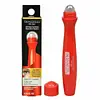What's inside
What's inside
 Key Ingredients
Key Ingredients

 Benefits
Benefits

 Concerns
Concerns

 Ingredients Side-by-side
Ingredients Side-by-side

Water
Skin ConditioningGlycerin
HumectantEthylhexyl Palmitate
EmollientPetrolatum
EmollientDimethicone
EmollientSea Silt
Skin ConditioningGlyceryl Stearate
EmollientPEG-100 Stearate
Cetearyl Alcohol
EmollientMilk Protein Extract
Hydrolyzed Collagen
EmollientTocopheryl Acetate
AntioxidantAvena Sativa Peptide
Skin ConditioningPolyacrylamide
C13-14 Isoparaffin
EmollientPhenoxyethanol
PreservativeHydroxyethylcellulose
Emulsion StabilisingCarbomer
Emulsion StabilisingArginine
MaskingLaureth-7
EmulsifyingGlycolic Acid
BufferingCaprylyl Glycol
EmollientRetinol
Skin Conditioning2-O-Ethyl Ascorbic Acid
Skin ConditioningSodium Hyaluronate
HumectantWater, Glycerin, Ethylhexyl Palmitate, Petrolatum, Dimethicone, Sea Silt, Glyceryl Stearate, PEG-100 Stearate, Cetearyl Alcohol, Milk Protein Extract, Hydrolyzed Collagen, Tocopheryl Acetate, Avena Sativa Peptide, Polyacrylamide, C13-14 Isoparaffin, Phenoxyethanol, Hydroxyethylcellulose, Carbomer, Arginine, Laureth-7, Glycolic Acid, Caprylyl Glycol, Retinol, 2-O-Ethyl Ascorbic Acid, Sodium Hyaluronate
Water
Skin ConditioningGlycerin
HumectantNiacinamide
SmoothingGlucose
HumectantCamellia Sinensis Leaf Extract
AntimicrobialAscorbyl Glucoside
AntioxidantPalmitoyl Oligopeptide
CleansingPalmitoyl Tetrapeptide-7
Skin ConditioningAcetyl Glucosamine
Skin ConditioningPanthenol
Skin ConditioningSaccharomyces/Xylinum/Black Tea Ferment
Skin ConditioningXanthan Gum
EmulsifyingYeast Extract
Skin ConditioningDipotassium Glycyrrhizate
HumectantLithothamnion Calcareum Powder
AbrasiveMica
Cosmetic ColorantThioctic Acid
AntioxidantRetinyl Palmitate
Skin ConditioningAscorbic Acid
AntioxidantTocopheryl Acetate
AntioxidantBeta-Carotene
Skin ConditioningHydroxyethylcellulose
Emulsion StabilisingPEG-14m
Emulsion StabilisingCarbomer
Emulsion StabilisingPolysorbate 20
EmulsifyingSodium Borate
BufferingButylene Glycol
HumectantTitanium Dioxide
Cosmetic ColorantDisodium EDTA
Phenoxyethanol
PreservativeMethylisothiazolinone
PreservativeWater, Glycerin, Niacinamide, Glucose, Camellia Sinensis Leaf Extract, Ascorbyl Glucoside, Palmitoyl Oligopeptide, Palmitoyl Tetrapeptide-7, Acetyl Glucosamine, Panthenol, Saccharomyces/Xylinum/Black Tea Ferment, Xanthan Gum, Yeast Extract, Dipotassium Glycyrrhizate, Lithothamnion Calcareum Powder, Mica, Thioctic Acid, Retinyl Palmitate, Ascorbic Acid, Tocopheryl Acetate, Beta-Carotene, Hydroxyethylcellulose, PEG-14m, Carbomer, Polysorbate 20, Sodium Borate, Butylene Glycol, Titanium Dioxide, Disodium EDTA, Phenoxyethanol, Methylisothiazolinone
Ingredients Explained
These ingredients are found in both products.
Ingredients higher up in an ingredient list are typically present in a larger amount.
Carbomer is a polymer of acrylic acid. Its main role is to create a gel consistency.
A high amount of carbomer can cause pilling or balling up of products. Don't worry, most products contain 1% or less of carbomer.
Glycerin is already naturally found in your skin. It helps moisturize and protect your skin.
A study from 2016 found glycerin to be more effective as a humectant than AHAs and hyaluronic acid.
As a humectant, it helps the skin stay hydrated by pulling moisture to your skin. The low molecular weight of glycerin allows it to pull moisture into the deeper layers of your skin.
Hydrated skin improves your skin barrier; Your skin barrier helps protect against irritants and bacteria.
Glycerin has also been found to have antimicrobial and antiviral properties. Due to these properties, glycerin is often used in wound and burn treatments.
In cosmetics, glycerin is usually derived from plants such as soybean or palm. However, it can also be sourced from animals, such as tallow or animal fat.
This ingredient is organic, colorless, odorless, and non-toxic.
Glycerin is the name for this ingredient in American English. British English uses Glycerol/Glycerine.
Learn more about GlycerinHydroxyethylcellulose is used to improve the texture of products. It is created from a chemical reaction involving ethylene oxide and alkali-cellulose. Cellulose is a sugar found in plant cell walls and help give plants structure.
This ingredient helps stabilize products by preventing ingredients from separating. It can also help thicken the texture of a product.
This ingredient can also be found in pill medicines to help our bodies digest other ingredients.
Learn more about HydroxyethylcellulosePhenoxyethanol is a preservative that has germicide, antimicrobial, and aromatic properties. Studies show that phenoxyethanol can prevent microbial growth. By itself, it has a scent that is similar to that of a rose.
It's often used in formulations along with Caprylyl Glycol to preserve the shelf life of products.
Tocopheryl Acetate is AKA Vitamin E. It is an antioxidant and protects your skin from free radicals. Free radicals damage the skin by breaking down collagen.
One study found using Tocopheryl Acetate with Vitamin C decreased the number of sunburned cells.
Tocopheryl Acetate is commonly found in both skincare and dietary supplements.
Learn more about Tocopheryl AcetateWater. It's the most common cosmetic ingredient of all. You'll usually see it at the top of ingredient lists, meaning that it makes up the largest part of the product.
So why is it so popular? Water most often acts as a solvent - this means that it helps dissolve other ingredients into the formulation.
You'll also recognize water as that liquid we all need to stay alive. If you see this, drink a glass of water. Stay hydrated!
Learn more about Water